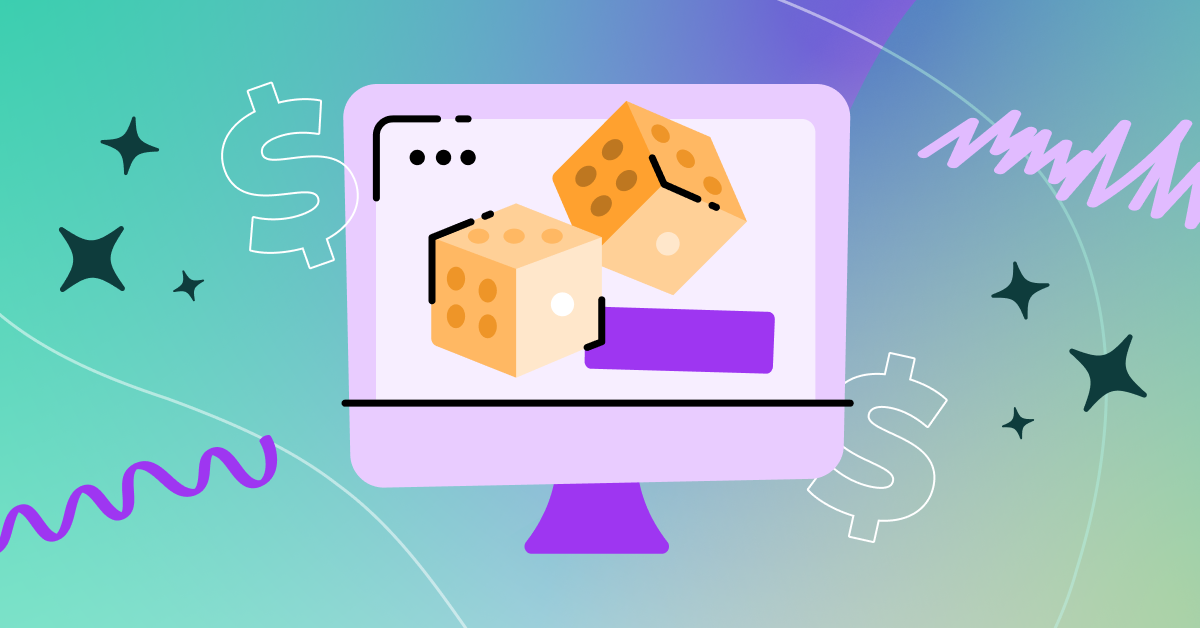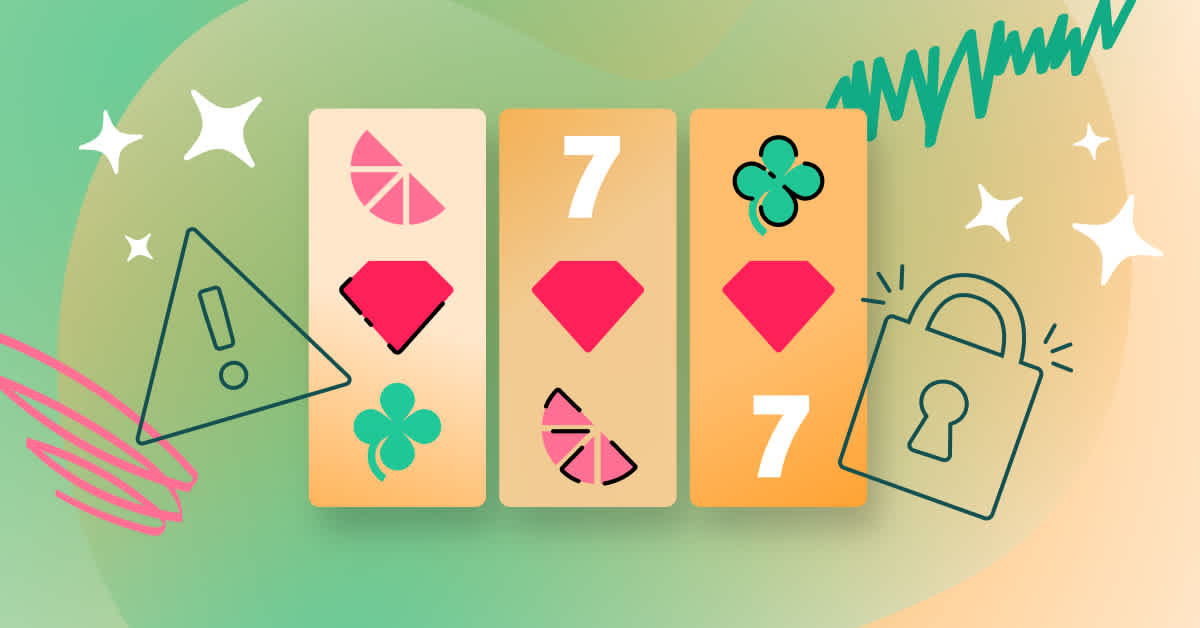It’s not uncommon for a small group of players to drive a large portion of revenue for an iGaming platform. In fact, just 2% of players can account for more than half of the total earnings. Losing even a few of these high-value players can spell financial trouble.
The truly scary part is most teams won’t see the signs of a disgruntled player on their way out until it's too late.
The ability to spot early behavior signals can make all the difference. In this post, we’ll explore why high-value players leave, the silent UX issues that push them away, and how leading iGaming teams are reducing churn by identifying risk early and responding fast.
Video transcription
Every team is after their most valuable players, but defining what makes someone truly high-value isn’t always straightforward. In our recent webinar, this topic came up again and again. The reality is that some of the same behaviors that signal a loyal high-value player can also detect high-risk gambling behavior.
Here’s how to tell the difference.
Patterns of a high-value player
From both operators and affiliates, a few shared traits stood out when it comes to high-value players:
Long session durations and frequent visits: These players return often and spend meaningful time on the platform.
Steady balance behavior: Their deposits and losses tend to follow a consistent pattern, without major spikes or dips.
Support interactions are about help, not frustration:
When they reach out, it’s to solve a problem, not to vent. They’re looking to keep playing, not quit.They respond to personalization: Offers, game suggestions, and rewards that match their preferences tend to get a reaction.
They enjoy gamified progression: Features like leveling up or climbing loyalty tiers keep them engaged and motivated.
They aren’t just depositing. They’re exploring new releases, coming back regularly, and responding to well-timed incentives. Their behavior shows a deeper connection to the experience. That’s what makes them valuable.
At the same time, it’s important to support responsible online gambling, ensuring that engagement remains both enjoyable and sustainable.
Why high-value players churn — without warning
High-value players don’t give second chances. When the experience doesn’t meet their expectations—whether it's a slow deposit, a glitchy promotion, or an unclear flow—they leave. No warning. No support ticket. They just leave.
Silent churn is real, and it's costly. Teams that wait for KPIs to flag a problem are already losing the race.

In fact, our Behavioral Data Index shows rage clicks in gaming and gambling are three times the cross-industry average, highlighting high levels of user frustration.
Dead clicks (clicks that go nowhere or do nothing) are also notably higher, pointing to potential navigational issues or unresponsive elements on platforms.
Common pain points that drain lifetime player value
You can't fix what you can't see. And many revenue leaks start small, in overlooked moments like:
3x the amount of rage clicks compared to other industries
Slow or clunky KYC and verification processes
Failed or confusing deposit and withdrawal experiences
Bonus redemption bugs or unclear redemption steps
Session timeouts mid-transaction
Poor mobile navigation that causes mis-clicks or stalls
These aren’t problems that show up cleanly in a dashboard. They show up in behavior: rage clicks, form abandonment, bounce patterns that only make sense when you can see the actual player journey.
Fullstory helped Jumbo Interactive uncover multiple revenue-draining bugs—some unnoticed for months—including one in their shopping cart flow that saved tens of thousands in lost revenue. The platform also increased transparency across product and engineering teams, enabling faster, cross-functional decision-making.
Behavioral data can help predict player loyalty or risk
Winning teams don’t just look at "player churn" as a number. They look at why it’s happening, and they look early.
Patterns that signal loyalty:
Early deposits that increase over time
High engagement with promotions and bonuses
Smooth, fast sessions across signup and deposit flows
Patterns that signal churn risk:
Rage clicks on deposit, bonus, or withdrawal forms
Repeat verification failures
Bouncing between pages without completing key actions
Abandoning a bonus after initiating it
When teams monitor user behavior—not just events—they can act faster, fix friction, and protect the players who matter most.
[Read + Watch] Identify and address high-risk gambling behavior in real time
Success story: How Casumo supports high-value players
The difference between average teams and leading teams comes down to one word: visibility.
Leaders aren't waiting weeks for churn reports. They're watching real player experiences, finding where frustration creeps in, and identifying revenue-impacting issues.
Behavioral data isn't "nice to have" anymore. It's the only way to keep high-value players loyal—and to turn loyalty into long-term value.
With Fullstory, Casumo reduced time-to-resolution by 87%, accelerating issue detection in registration and deposit flows. Their team now resolves player-reported UX problems nearly 3.5 hours faster—fueling more efficient releases and a smoother experience for high-value users.
4 proven strategies to win and retain high-value players
Once you’ve brought high-value players through the door, the next challenge is keeping them. In a crowded market, loyalty can’t be bought with one-off bonuses or generic email blasts
The real differentiator? A smooth, rewarding experience that feels personal at every step.
Here are a few retention strategies top teams use to keep their most valuable players coming back—and turning loyalty into long-term value:
1. Deliver a smooth experience, especially around monetization moments
One of the fastest ways to lose a high-value player? Make it hard to play—or harder to pay. Whether it’s a laggy signup flow or bugs in the deposit experience, friction at critical moments erodes trust and increases drop-off.
Operators focused on high-value retention prioritize:
Optimized deposit flows for speed, simplicity, and trust.
Seamless login and identity verification on every device.
Regular audits of mission-critical flows like withdrawals and bonuses.
Ongoing monitoring for UX friction, such as rage clicks or repeated navigation loops.
Even small usability issues—like a confusing bonus opt-in or a delayed transaction confirmation—can mean a lost player. Capturing these signals in real-time allows teams to act before the damage is done.
2. Personalization that goes beyond the first name
High-value players want more than functional rewards—they want relevance. Personalization is what transforms a transactional gaming experience into something that feels intuitive, thoughtful, and genuinely player-first. And this doesn’t start with the operator—it often begins before a player ever lands on a casino or sportsbook.
The affiliate’s role in personalization
Smart affiliates contribute to personalization by:
Creating segmented landing pages by game type, region, or player maturity
Using behavioral signals (e.g. past browsing sessions or tab behavior) to recommend offers
Collaborating with operators to adjust campaigns based on downstream player quality
“The journey starts with us—but we don’t always see the full picture.”
Operator-driven personalization tactics
Once the player arrives, operators take the handoff and scale personalization further:
Dynamic offers based on individual play style, betting history, or favorite games
Direct communication from a dedicated “VIP manager” —not a faceless push notification
Custom loyalty rewards that evolve with frequency, lifetime value, and behavioral cues
Content recommendations (e.g. new slots vs. blackjack tournaments) based on past game engagement
3. Gamification makes loyalty feel like progress
Gamification brings retention to life by transforming loyalty into a journey. Instead of relying solely on transactional incentives like cashbacks or points, gamification offers players a sense of structure, achievement, and forward momentum.
Scalable ways to gamify your platform:
Tiered levels or loyalty brackets with perks unique to each tier.
Weekly challenges or missions that refresh player interest and encourage return visits.
Progress indicators (like meters or badges) that visually reinforce achievement.
These elements don’t just boost engagement—they give players a reason to come back, not out of routine, but because there’s something meaningful waiting for them the next time they log in.
4. Trigger-based incentives keep the momentum going
Timing is everything in player retention. A well-timed bonus or message—delivered at the exact moment a user is showing signs of disengagement—can be the difference between a lost user and a loyal one.
Winning retention strategies increasingly rely on behavioral triggers such as:
Surprise rewards after periods of inactivity (e.g., no logins in several days).
Cashback offers or “second chance” bonuses after large losses.
Real-time encouragement messages during a long session or milestone event.
Targeted incentives after registration, deposit abandonment, or verification drop-off.
The key is relevance. Instead of sending generic promotions, operators are delivering value precisely when the player is most likely to appreciate it—maximizing both impact and ROI.
By combining seamless user journeys, smart personalization, layered gamification, and behavior-driven incentives, forward-looking iGaming teams don’t just retain their high-value players—they deepen loyalty, extend lifetime value, and build long-term brand trust.
Bonus: Every one of these strategies works best when grounded in real behavioral data. Teams that understand individual player patterns—not just broad trends—will always have a competitive edge.
[Watch] Casumo's journey with Fullstory
Protect your wins before they disappear
You can't afford to lose what you can't see.
Silent churn, hidden UX failures, missed behavior signals—they're costing iGaming brands billions in lost lifetime value every year. And the worst part? Traditional dashboards won't tell you when it's happening.
A gaming analytics solution like Fullstory helps teams see every moment that matters, from the first deposit to the fiftieth bonus redemption. If you're ready to protect your most valuable players before it's too late, we’re ready to help.
See how Fullstory helps leading iGaming brands protect loyalty and revenue. Check out our product tour or request a demo today.






